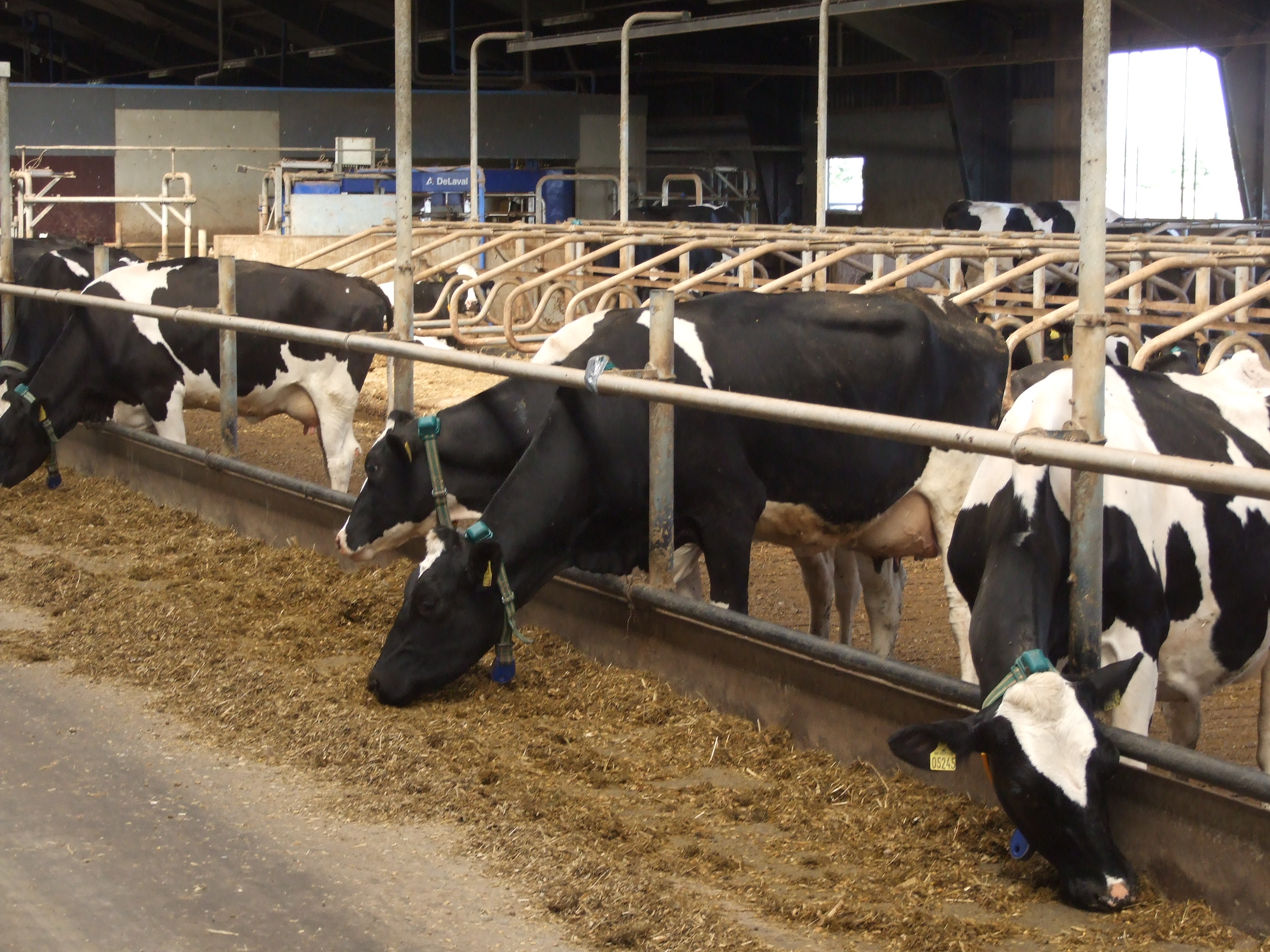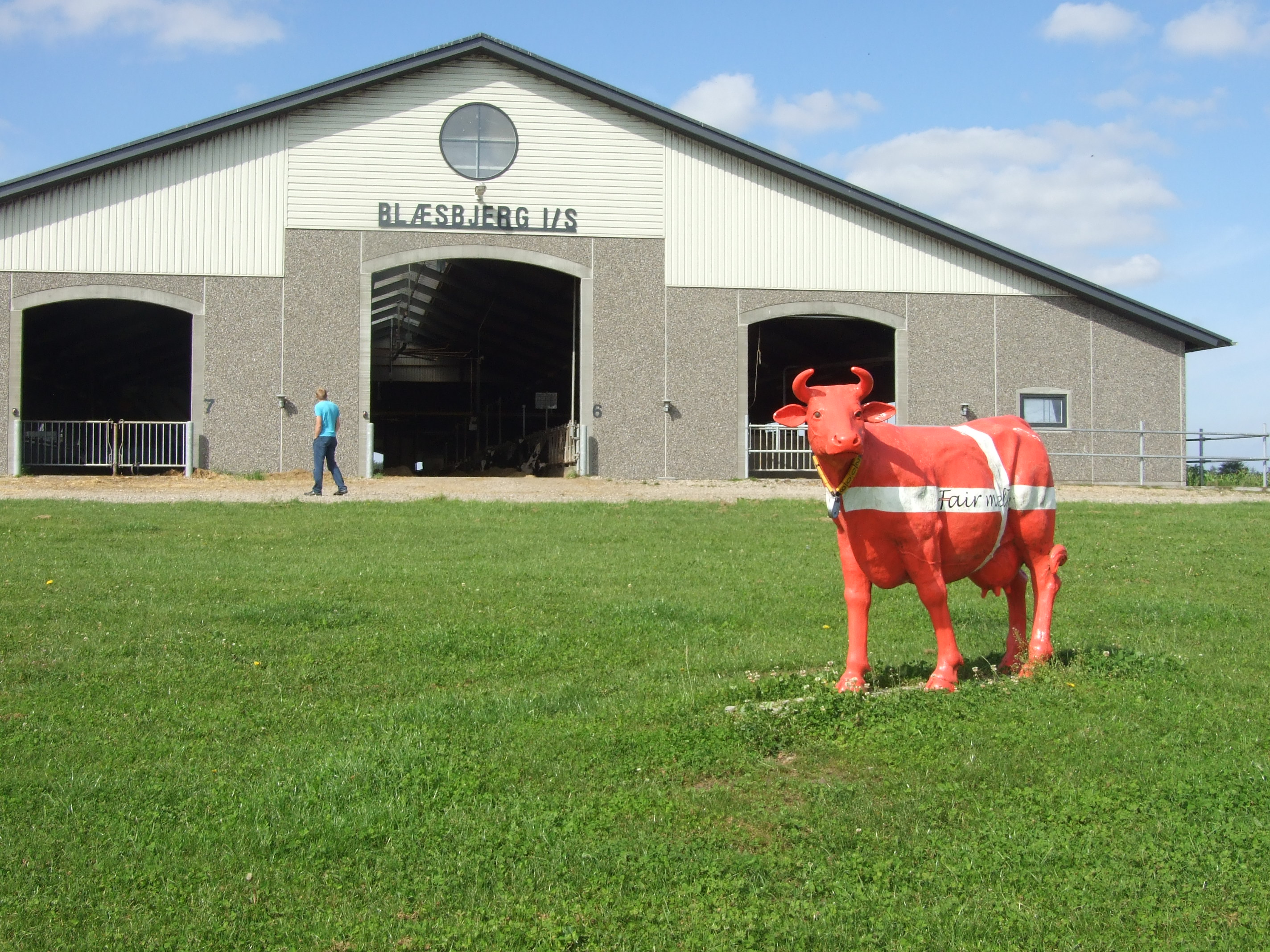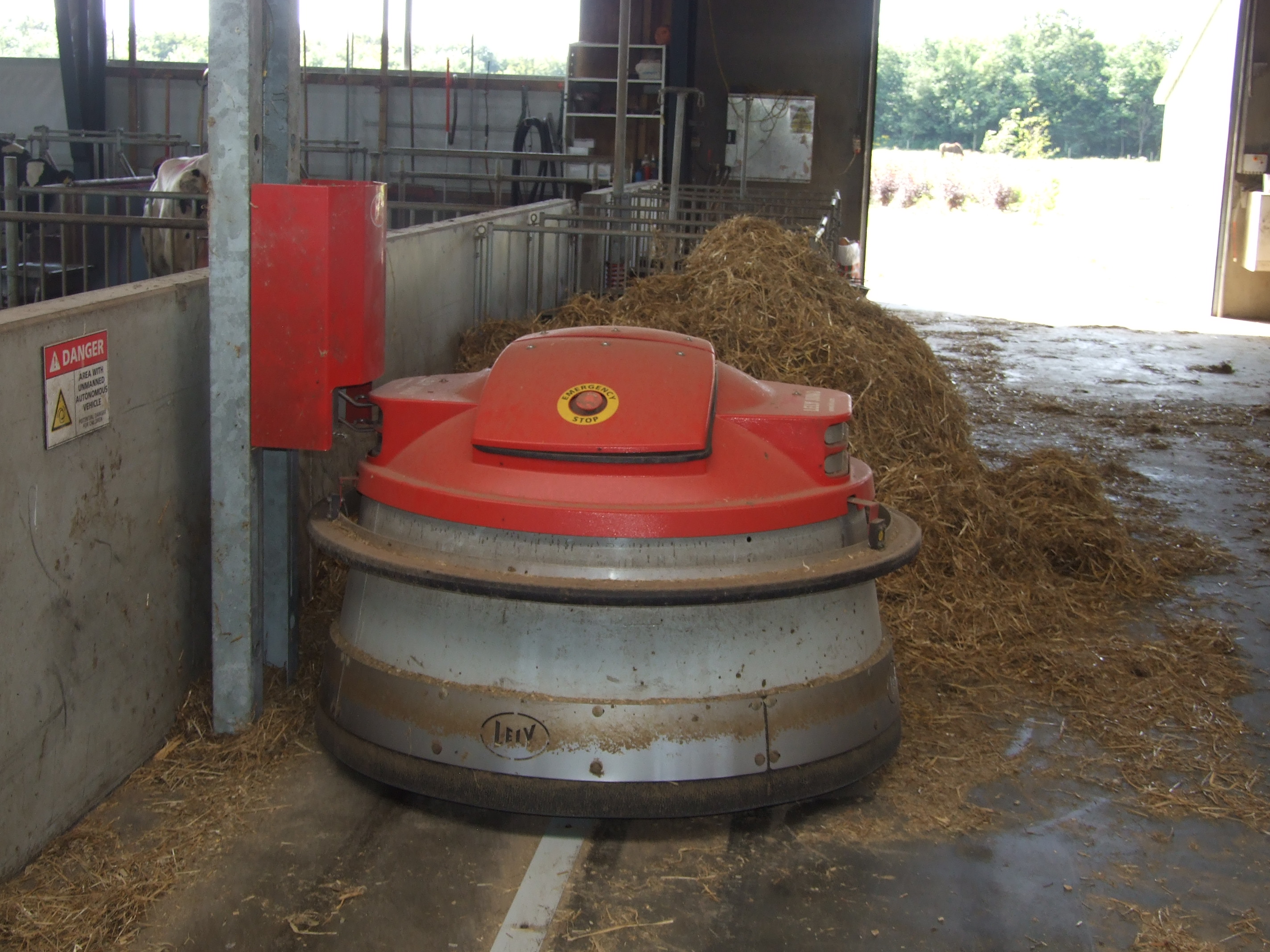



Just Why Do the Danish Lead the Way?
DENMARK - Impressed by what he saw on tour round a Danish Dairy farm, Stuart Lumb told TheCattlesite about what he learned regarding the technology and scale of Danish milking.Back in the 1960s the typical Danish farm had a combination of cropping, a herd of Danish Red cows and a herd of Danish Landrace pigs. Cows grazed on pasture and barley was used in the concentrate rations.
Cows were tied up in cow sheds and milked with bucket machines, after which the milk went to the local dairy in churns to make famous Lurpak butter, with the skimmed milk being returned to the farm to be used as nutritious feed for the pigs.
Fifty years on, things have changed dramatically. Today there are just under 600,000 dairy cows in Denmark. Seventy per cent are Holsteins, plus 30 per cent Viking Reds and Jersey (to lift milk quality).
Danish cows- equipped with electronic tagging- feed indoors on a grass and corn silage ration.
The average herd size ranges from as low as 20 up to 2000, with the average being 160. Producer numbers have dropped drastically in the last 10 years, in fact practically halving- now standing at 4000.
Danish cows are the most productive in the world, beating the Americans and the Dutch, giving on average 9250kg of milk, all produced under high welfare conditions. Danish dairymen are fortunate in having a national advisory service with 31 centres scattered throughout Denmark.
Advice is readily available on feeding, breeding , vet matters and general management. Denmark has an extremely detailed national cattle data base. Hence individual data is logged with respect to milk yield and quality, health and disease, breeding and feeding policy.
There is a strong focus on milk quality involving a new PCR technique for mastitis. Denmark has 10 specialist milk quality advisers who will discuss problems over the phone plus if necessary visit farmers to advise on reasons for poor milk quality and how milk quality can be improved.
A national health programme focuses on reducing mortality, reducing mastitis and improving claw health. There is also a national breeding programme which focuses on mastitis, claw health, fertility, udder shape, feet and legs, ease of calving, longevity, milking speed and finally temperament.
Given that farms are getting on average larger year on year and labour more scarce and expensive, it’s hardly surprising that much use is made of modern technology and labour saving devices. Machines don’t get hangovers or phone in sick too often!
The author recently visited a large well appointed farm and was shown round by Soren Moller, who works for local fabrication company Jyden Bur A/S. The farm in question is located in north Jutland and is very large.
Built quite recently, in 2008, “Blaesbjerg L/S” is owned by Poul Erik Andersen and his brother Ole. it has 430 cows plus 430 heifers. Other staff are a herdsman and 3 students. Cows calve evenly throughout the year and produce 10,000kg of milk at a fat percentage of 4.08 and protein level averaging 3.4 per cent.
Built in 1998, Blaesberg L/S is owned by Poul and Ole Andersen who milk 430 cows producing around 30 kilos of milk every day.
This is above the Danish national average and is very creditable given the large number of cows in the herd. Cows give on average 30kg of milk daily and the large bulk tank is emptied every other day. Heifer calves are retained for eventual breeding; however bull calves are sold to a neighbouring farm at 2 weeks of age.
Naturally zero grazing is employed and the cows are housed in a very impressive wide span building- 33metres wide by 168metres long. Curtains along the sides can be raised and lowered to suit the time of day and seasonal temperatures, plus the cowshed walls are finished off with a very attractive “pebbledash” finish.
The farm utilises many types of labour saving technology. Because of the huge numbers of cows, locating individual animals could literally take all day and so modern technology comes to the rescue here in the form of the CowDetect system.
A transmitter in the cow’s collar sends out signals, picked up via a receiver (similar to GPS technology) allowing the herdsman to track each individual cow via the office PC or his smart-phone. Health problems can be flagged up and very importantly the system helps identify cows coming on heat.
The forages fed to the cows are 50 per cent corn silage and 50 per cent grass silage, fed by means of a feed wagon. This distributes the roughage in front of the cows, accessed through metal penning. This and much of the metalwork was sourced from local equipment manufacturers Jyden Bur A/S.
In their eagerness to eat the roughage cows push the feed out of their reach into the central access passage. Instead of having a stock-man waste valuable time sweeping up, the farm has invested in a robotic sweeper, made by Lely.
On-farm technology includes this Lely robotic sweeper which collects wasted forage from eager cows - saving on man power.
Six Delaval robots take care of the milking chores, with concentrates being fed at milking. Manure tends to build up on the slatted areas in cow houses and technology has come to the rescue here as well. In this instance another small remotely controlled robot runs along the slats, pushing accumulated manure down the gaps into the slurry pit.
Bedding up with straw is another tedious task and here technology comes to the rescue yet again. A large rectangular hopper, which runs along a monorail which is located over all the cow lying areas, is automatically filled with straw.
At any specific point the hopper can be made to open and the straw drops by gravity on to the lying areas.
Walking throughout the entire farm it was noticeable how calm the cows were, especially given that there is relatively little human contact with the cows all being milked robotically. Certainly credit is due to all involved in running what is a very impressive state-of-the-art high tech dairy farm.





